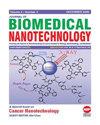Insulin-Like Growth Factor 2 mRNA Binding Protein 3 Suppresses Ferroptosis in Non-Small Cell Lung Cancer via Stabilizing m6A Modification of Fanconi Anemia Group D2 Protein
IF 2.9
4区 医学
Q1 Medicine
引用次数: 0
Abstract
This study investigated the role of insulin-like growth factor 2 mRNA-binding protein 3 (IGF2BP3) in non-small cell lung cancer (NSCLC) and its association with N6-methyladenosine (m6A) modification. The study analyzes the expression levels and stability of IGF2BP3, as well as its impact on NSCLC cell functions. The findings indicate that IGF2BP3 is upregulated in NSCLC patients and cell lines. Knocking down IGF2BP3 reduces cell proliferation and promotes ferroptosis in A549 and H1299 cells. Additionally, the study reveals that IGF2BP3 regulates the m6A modification of the fanconi anemia group D2 protein (FANCD2) and influences its mRNA stability. Overexpressing FANCD2 counteracts the effects of IGF2BP3 silencing and increases the aggressiveness of NSCLC. Furthermore, treatment with celastrol induces ferroptosis in NSCLC cells and inhibits tumor growth in vivo. In conclusion, these findings suggest that IGF2BP3 acts as an oncogene in NSCLC. Its interaction with FANCD2 through m6A modification suppresses ferroptosis in NSCLC cells. Thus, the IGF2BP3/FANCD2 signaling pathway may serve as a potential therapeutic target for NSCLC.胰岛素样生长因子2 mRNA结合蛋白3通过稳定范科尼贫血D2组蛋白的m6A修饰抑制非小细胞肺癌癌症中的铁蛋白脱失
本研究探讨了胰岛素样生长因子2 mRNA结合蛋白3(IGF2BP3)在癌症(NSCLC)中的作用及其与N6-甲基腺苷(m6A)修饰的关系。本研究分析了IGF2BP3的表达水平和稳定性,以及其对NSCLC细胞功能的影响。研究结果表明,IGF2BP3在NSCLC患者和细胞系中上调。敲除IGF2BP3可减少A549和H1299细胞的细胞增殖并促进脱铁性贫血。此外,研究表明IGF2BP3调节fanconi贫血组D2蛋白(FANCD2)的m6A修饰并影响其mRNA稳定性。过表达FANCD2可抵消IGF2BP3沉默的作用,并增加NSCLC的侵袭性。此外,雷公藤红素治疗可诱导NSCLC细胞脱铁,并在体内抑制肿瘤生长。总之,这些发现表明IGF2BP3在NSCLC中起致癌基因的作用。其通过m6A修饰与FANCD2的相互作用抑制NSCLC细胞中的脱铁性贫血。因此,IGF2BP3/FANCD2信号通路可以作为NSCLC的潜在治疗靶点。
本文章由计算机程序翻译,如有差异,请以英文原文为准。
求助全文
约1分钟内获得全文
求助全文
来源期刊
CiteScore
4.30
自引率
17.20%
发文量
145
审稿时长
2.3 months
期刊介绍:
Information not localized

 求助内容:
求助内容: 应助结果提醒方式:
应助结果提醒方式:


